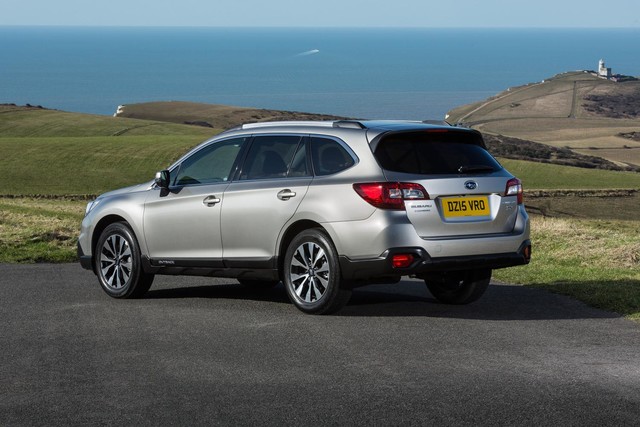Subaru took a long time to get round to developing its first diesel engine. However surprising it may seem, the fact remains that even the very earliest Subaru diesels are still less than ten years old. Pressure from European markets made it unlikely that the company could hardly have left it any later. I say hurrah for pressure from European markets, because without that the current, fifth-generation Outback might have been available only with the 2.5-litre petrol engine as fitted to the car tested here, and without any diesel alternative.
When I test drove the latest Outback earlier this year, I quickly became convinced that the diesel was better, and a week with the 2.5 petrol has done nothing to alter my view.
You might think that the petrol engine would provide superior performance, given that it produces 173bhp while the diesel fades out at 148bhp, but no. Subaru's own figures show that the 2.5 petrol takes 10.2 seconds to accelerate from 0-62mph, while the diesel can do the same thing in just under 10 seconds.
This seems even more unlikely when you consider that the 2.5 is also considerably lighter than the diesel. The reason for it is that the diesel engine's characteristics are much better. It pulls well almost regardless of its operating speed, while the 2.5 has to be revved hard to produce anything like comparable performance.
You wouldn't want to do this very often. Subaru says it has put a lot of effort into reducing the Outback's noise levels. While this has been effective in most conditions it certainly hasn't in those involving hard acceleration. Pushed to its limits, the petrol engine sounds noisy and thrashy.
It's also less economical than the diesel, but here I feel I have to come to its defence. Official figures show the Outback with the 2.5 petrol averages 40.4mpg, and on a very long but not particularly hurried run over A-roads it was easy to improve on that by some margin. Complaints that petrol-engined Subarus use a lot of fuel are less easy to justify than they once were.

The test car's SE Premium trim meant that it was fitted with 18-inch wheels, which was a problem in itself. Even on the 17-inch rims of the cheaper SE models the Outback's ride is rough, and on 18s it's considerably worse, to the extent that you can feel discomfort even at 20mph or less. At higher speeds it doesn't settle down unless you happen to be driving along a brilliantly surfaced road, and as we know there aren't many of them in the UK.
This is a great pity, because the Outback handles very well. If it weren't trying to be an off-roader, and therefore sat closer to the ground, it would handle better still. But still, the famous Subaru combination of four-wheel drive, the boxer engine layout with its low centre of gravity and soft but well-damped suspension makes it a pleasure to drive through a sequence of corners.
Interior design is something Subaru has never exactly been a class leader in, and despite recent improvements the Outback struggles to offer the style or the materials to justify a price of, in this particular case, £31,495.
However, there is plenty of space for four full-grown adults. Also, the luggage space of 599 litres with all seats in place or 1,848 litres with the rear seats folded (including 47 litres in an underfloor compartment behind the rear axle) is generous.
Boot capacity would have been less than that if Subaru had fitted a spare wheel. The fact that this didn't happen is bewildering when you bear in mind that the Outback is, within reasonable limits, a very competent off-roader, capable of safely making its way down a steep, muddy slope. Imagine the sinking feeling if you got a puncture at the bottom and then realised that your chances of getting back up again depended on the questionable merits of a tyre repair kit.



